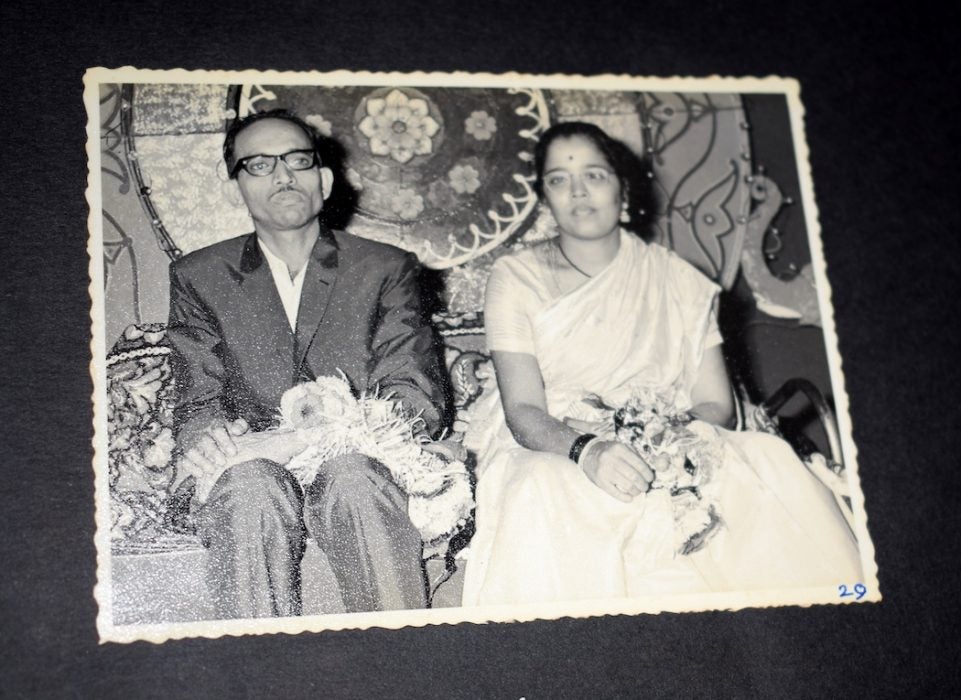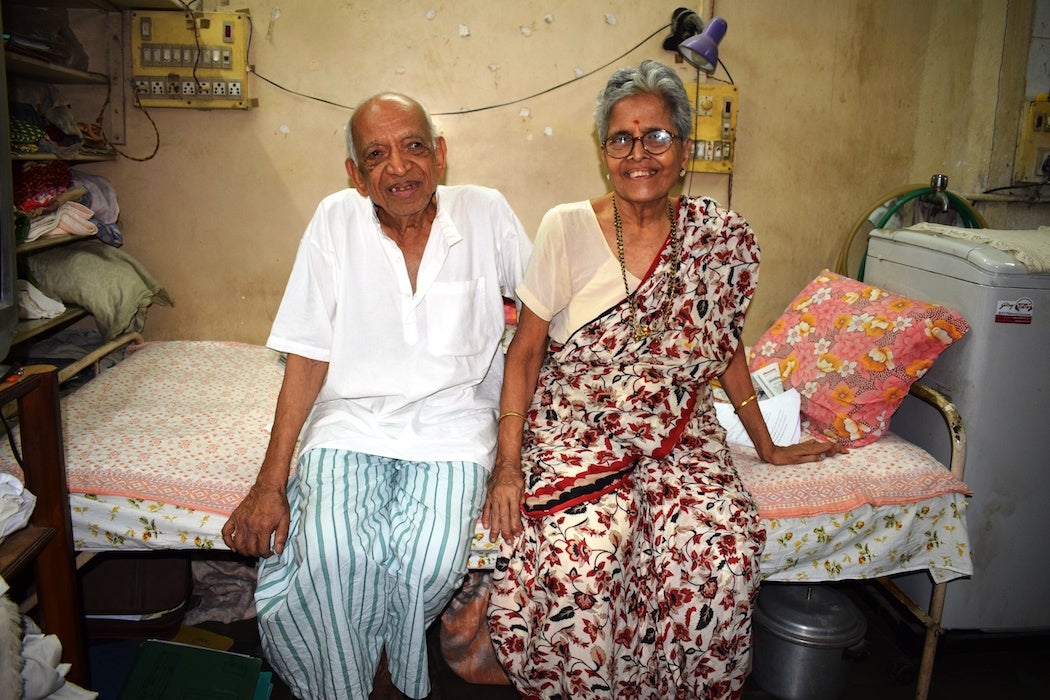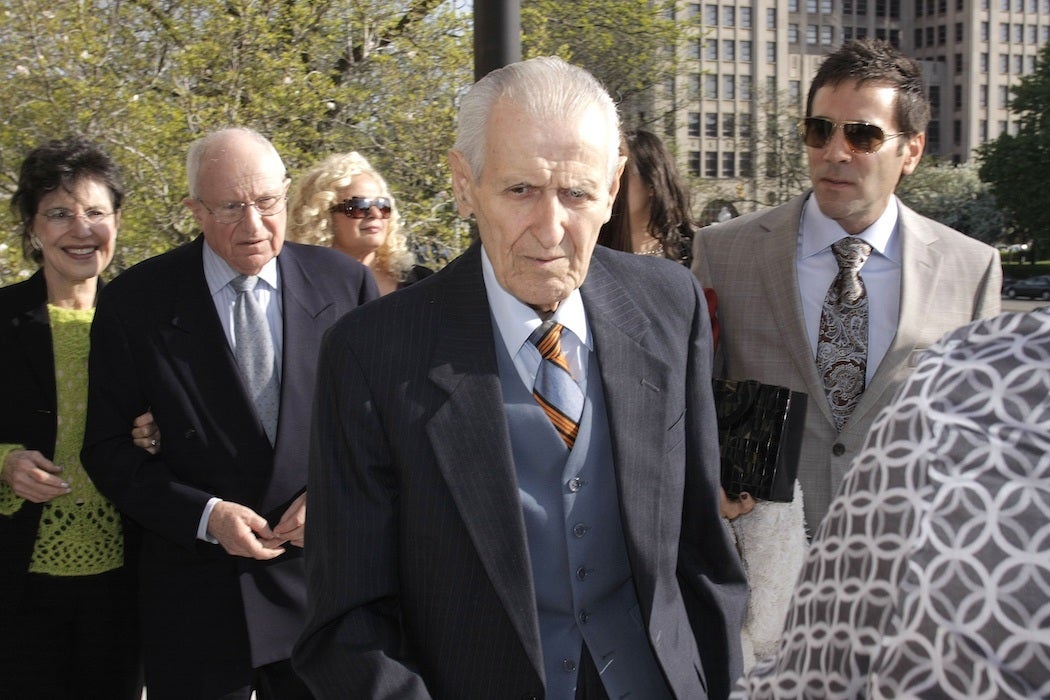Eighty-seven-year-old Narayan Lavate, and his wife, Iravati, 78, are alive against their wishes. They are healthy, but have petitioned numerous Indian authorities since 1987 for a state-sponsored end to their lives. Most recently, in December 2017, they wrote to the President of India, seeking a “death sentence.” The couple’s demand for an expedited exit, however, has fallen on deaf ears: With no serious ailment, their crisis is purely existential.
“We were born, not out of our own volition, but as a result of a chemical reaction process, popularly called procreation,” says Narayan, a retired government employee, seated in his 300-square-foot Mumbai home. “But we want to have a say in our death. We want permission to opt for voluntary termination of our lives with help from a physician in a painless manner—electric chair, nitrogen gas asphyxiation, or a lethal injection.”
Narayan’s wife, a former school headmistress, agrees. “We are leading unproductive and obsolete lives. We’re easy prey to disability and disease that come with advancing age, and hence, a burden on the country’s already scarce resources. Compelling us to stay alive is not just cruel, but pointless.”
In a landmark judgement, the culmination of a 13-year-old battle for the right to die with dignity, the Supreme Court of India recently legalized passive euthanasia, the withholding of medical treatment to hasten a terminally ill patient’s death. However, the Lavates’ death wish is not rooted in an illness, and hence is unlikely to be granted, according to activists.
“The basic criterion for euthanasia is that the person should be ailing without hope of recovery,” says Dr. Surendra Dhelia, joint secretary of the Mumbai-based NGO, Society for Right to Die with Dignity. “But the Lavates’ plea does not fall under this definition. I’ve met the couple, and their contention is that they’re healthy today, and want a peaceful exit at this point, before they fall prey to illnesses. The law must first evolve to accept active euthanasia (which involves the use of treatments designed to promote death sooner than would otherwise be expected), before it even starts considering the couple’s demand.”
The Lavates, however, disagree. “The Indian Constitution grants us the Right to Life. It is only reasonable that it allows us the Right to Death.”
The couple has been obsessed with death for decades. Born in August, 1931 in Mumbai, Narayan was a 30-year-old when he first attempted suicide. He had been a Mumbai University topper in Economics, and was employed with the Maharashtra State Road Transport Corporation (MSRTC), a state-run bus service in the western Indian state of Maharashtra. Unprompted by a personal or financial crisis, Narayan went to a beach in Mumbai one day, and walked into the sea. A few fishermen spotted him drowning, and pulled him out.
“Since I was a topper, I was offered a scholarship. But I refused it. The scholarship, like any other pleasure in life, was temporary happiness—far from being real. Even then, I believed that death, alone, is the truth. It’s inevitable, so why not get done with as soon as you can? I didn’t want to get caught in the illusory trappings of life, and attempted suicide,” says the octogenarian. “It made sense.”
Even after he was rescued, Narayan, who was being (as he describes it) “forced to keep breathing,” continued to silently revolt against traditional existence. He would avoid interactions with his family, had no friends, and would remain immersed in his books. He wouldn’t indulge in alcohol or like vices, and would simply walk around the city, looking for a street lamp, where he could sit peacefully and read.
Want more stories like this one?
Although the median age for marriage of Indian men at the time was approximately 22 or 23 years, Narayan married only after he turned 37. He wasn’t in love, and did it only to fulfill his mother’s wish. His mother was on her death bed, and wished to see Narayan happy before she breathed her last breath.
“Soon after we got married in 1968, Narayan told me that he didn’t want kids,” says Iravati. “It was his conviction that adding to the already populated earth was a social crime. He gave me a year to think about it, and make a decision. I found myself in agreement with him, and he underwent a vasectomy.”
As days melted into years, the couple’s decision not to have children invited strong criticism from their family. The outrage soon extended to their neighbors, and there came a point where Iravati was not allowed to visit children of other families in her housing society.
“Although our decision wasn’t because of a deficiency, people assumed us to be sterile. Infertility is a massive stigma in India, and on most occasions, women bear the brunt of it. It is believed that even if a ‘barren’ woman’s shadow befalls a child, he wouldn’t live. I was hearing all these things, and decided to stop interacting with neighbors. I wouldn’t attend weddings or any other social gatherings. Our decision not to have children did take a toll on our social life, but we were determined to stand by it,” says Iravati, who then taught math at a local school.

Over the next two decades, the couple got closer, and Narayan started sharing his views about life and death with his wife. Iravati, once again, conformed. With books like Marya Mannes’ Last Rights in 1973, the West was witnessing a silently-budding movement for the right to die in peace and dignity. Their discussions revolved mainly around the question of euthanasia. But in India, the idea was a non-starter. The reason for this, Narayan says, was rooted in strong religious beliefs: Humans have only one life on Earth, and therefore, it must be preserved at all costs, even if it may become a living hell.
“But what people don’t realize is that religions do not speak of life and death, but of birth and death. In Indic religions, it is well-known that spiritually-advanced individuals often choose the time and place of their departure from the world. The Bhagwat Gita, the most sacred Hindu scripture, clearly states the procedure, whereby an enlightened person can voluntarily drop his body. Both in Jainism and Buddhism, there are techniques in which the body can be deliberately starved and discarded,” argues Narayan, referring to a letter he received from senior Indian politician and intellectual, Dr. Karan Singh, in August 2017.
“As Health Minister, I had privately mooted with some top scientists the possibility of exploring what, for want of a better term, I called a Nirvana pill,” Singh wrote in a story in the Indian national daily, the Hindustan Times, which he shared with Narayan. “It would combine lethal and hallucinogenic substances to enable a person to leave the world painlessly and joyously, whenever he or she deems it fit to do so. We do not have to wait until we are racked with unbearable pain before taking such a step.”
Convinced that tolerating the roller coaster of life was futile since death was ultimate, the couple, in 1987, started petitioning authorities for “mercy.” In the past three decades, they’ve written to innumerable state and judiciary heads. They’ve argued that they should be permitted to end their lives since medical termination of pregnancy is allowed. They’ve tried to convince officials they’re “suffering inwardly for no fault of our own,” and that it is unfair to compel them to wait until serious deformities befall them. They’ve also underlined how a physician could help them commit suicide—ingesting a fatal dose of a narcosis drug—and how the process—sleep followed by deep coma and death—would be “absolutely risk-free and painless.” They’ve also offered to be hanged in place of two death-row convicts.
“We are not the sole owners of our bodies, but trustees,” the couple wrote in a letter to the Chief Justice of India. “It is now time to return the kindness shown by society (to us) by donating our bodies, while they are usable. We are told that in ancient times, there lived a sage by the name, Dadhichi, who willingly gave his bones to win the war against demons. We wish to follow in his footsteps.”
Majeed Memon, a leading Indian politician and criminal lawyer, says the couple’s conviction to donate their organs is “appreciable,” but legally, it’s questionable. “It is difficult to justify their stand—that they’re frustrated with life—when, in fact, they’ve lived their full lives. They can donate their organs when natural death occurs, and relevant organizations should dissuade them from pursuing untimely deaths.”
With no response to their pleas, the couple registered with Dignitas, one of the four non-medical right-to-die organizations in Switzerland, where assisted suicide is legal. Most recently, on May 10, 2018, Dr. David Goodall, a renowned Australian scientist, ended his life at one of the Swiss clinics. That option, however, is not available to the Lavates.
“I don’t have a passport,” explains Narayan. “And to get one issued, they require my birth certificate. I was born at home, and my birth was never registered. Iravati has a passport, but she doesn’t want to go without me. We want to die together.”
Since abetment of suicide is a serious offense in India, the couple has also written to the Prime Minister, calling for amendments in the Indian Penal Code. They argue that the law should be altered to cover relief for registered organizations that help individuals with physician-assisted suicide. “With such simple amendment, organizations like Dignitas can be formed in India as well. And we will be able to die with dignity in our own beloved country—rather than a foreign land.”
Yogesh Singh, a former senior police officer and a lawyer, says that such an amendment shouldn’t be brought into effect. “Under the Indian law, no form of assistance with suicide is legal, and I don’t see this changing. It could lead to gross misuse,” says Singh.
The couple has also contemplated suicide, but do not wish to go ahead since if the attempt, like Narayan’s first, fails, they’ll end up suffering more because of their age. “A lethal injection or hanging us by a noose will ensure certain and painless death,” says Narayan. “We are also thinking about issuing a newspaper advertisement, offering INR 10 lakh [$15,000] to any underworld don, who wishes to kill both of us. The only hurdle is: There might be legal repercussions for the man, which we want to avoid.”
You may also like this story:
The History of the Euthanasia Movement
With no solution on the horizon, the couple also planned Iravati’s murder. In a post-dated letter to her husband in January this year, Iravati wrote, “You had made a request for active euthanasia for both of us, but I am certain that the President of India will not listen to our plea. That is why I can only see one solution, that any time after March 31, 2018, you can strangulate me, and free me from this dreary living. Since this will be considered a planned murder, you will be hanged for this crime by the court. They won’t have any other option, and your wish to die through legal means will also be fulfilled.”
The couple eventually dropped the plan, realizing that the legal course would take years to see culmination, and in the mean time, Narayan would be lodged in prison.
Although natural death seems to be the only foreseeable option for the Lavates, Narayan is still optimistic that the Indian Prime Minister will consider his plea for an amendment in the Indian Penal Code, and make physician-assisted suicide legal in special cases in India.
“Society has no qualms when it comes to regulating birth. But death remains unorganized. And more often than not, it’s painful. Wouldn’t Earth be a more resource-rich and more contented place if an easy and dignified exit was possible?” he asks.








